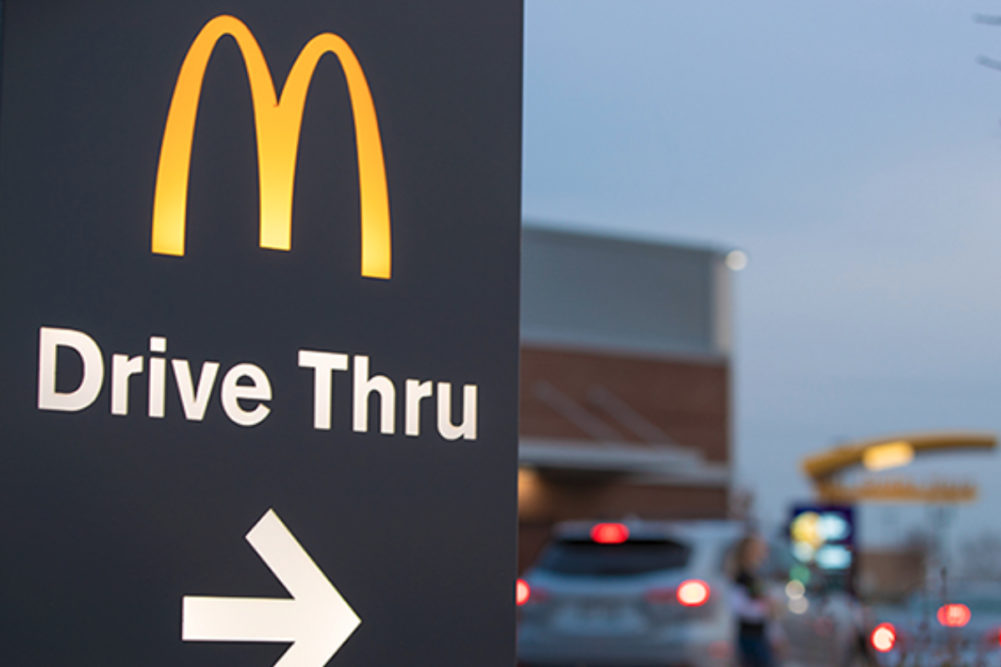Executives cite pandemic impacts on performance
CHICAGO — McDonald’s Corp. executives believe the worst impacts of the pandemic on sales performance are in the past. In the latest quarter, the restaurant company’s net income dropped 68% and revenues plummeted 30%, driven by temporary restaurant closings, limited operations and dramatic changes in consumer behavior.
“As you can see, it remains a dynamic situation as the threat of COVID-19 continues to depress consumer sentiment, and the vagaries of the pandemic create an unpredictable operating environment,” Christopher J. Kempczinski, president and chief executive officer of McDonald’s Corp., said during a July 28 earnings call. “In many markets around the world, most notably in the US, the public health situation appears to be worsening. Nonetheless, I believe that Q2 represents the trough in our performance as McDonald's has learned to adjust our operations to this new environment.”
McDonald’s net income for the second quarter ended June 30 was $483.8 million, equal to 65¢ per share, which compared with $1.5 billion, or $1.97 per share, in the prior-year period. The latest quarter included higher general and administrative expenses related to increased marketing and franchisee support.
Revenues totaled $3.8 billion, down 30% from $5.4 billion the year before.
Global comparable sales declined 24%. In the United States, comparable sales decreased 8.7% for the quarter, sequentially improving over the three-month period.
“Pre-COVID, nearly 70% of customer orders were in-restaurant across our larger markets,” said Kevin M. Ozan, chief financial officer. “So closing the dining area or even limiting dine-in capacity has a substantial impact on results. Today, almost all restaurants and about two-thirds of the dining rooms have reopened in the segment, although many restaurants are still operating with restrictions, such as limited hours or channels based on local regulations.”
Nearly 95% of McDonald’s restaurants in the United States have a drive-thru, a competitive benefit throughout the pandemic, Mr. Ozan added.
“As customers shifted to a more contactless experience, drive-thru accounted for nearly 90% of our sales again this quarter,” he said. “We also continue to see an uptick in delivery and digital transactions per restaurant.”
Delivery, drive-thru and digital are three strategic priorities for McDonald’s going forward.
“In terms of enduring behavior, I think whether it's the use of kiosk, the use of mobile, the use of delivery, the use of drive-thru, certainly one of the things is that customers are looking for more of a contactless type of experience,” Mr. Kempczinski said. “They're looking for more of a digital type of experience, one that they can navigate on their own.”
Breakfast has been weak spot for McDonald’s in recent years due to heightened competition and a lack of operational focus. The pandemic has since canceled many morning commutes, pressuring the fast-food chain’s performance during the daypart.
“Breakfast has been one of the more challenged dayparts due to coronavirus,” Mr. Kempczinski said. “If you look at how we've performed through the pandemic, even though breakfast is certainly in the US still the most challenged daypart, we're actually growing our breakfast share. And so while it is a drag from an overall standpoint, we're gaining share at breakfast.”
Looking ahead to the third and fourth quarters, management said it plans to significantly increase marketing spend to accelerate recovery and drive growth.
“There will be some innovation,” Mr. Kempczinski said. “I would say that the bulk of that spend is not intended to be going toward innovation. The bulk of that spend is intended for really core menu items and perhaps spotlighting some of our service channel opportunities like, for example, digital… It is going to be largely against the base business because our view is, right now, consumers are still looking for sort of the trusted favorites, which is why core menu makes sense for us.”
Shares of McDonald’s trading on the New York Stock Exchange closed on July 28 at $196.24, down $5.01, or 2.5%, from the previous close.





